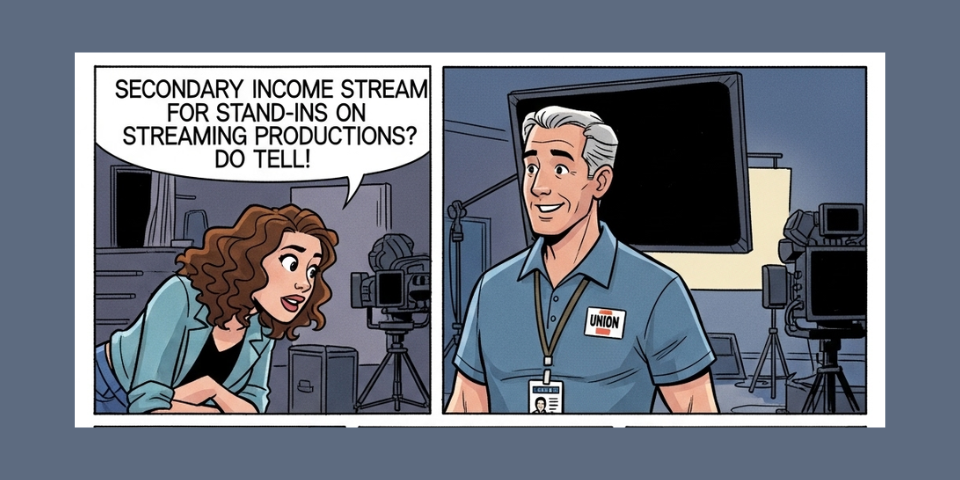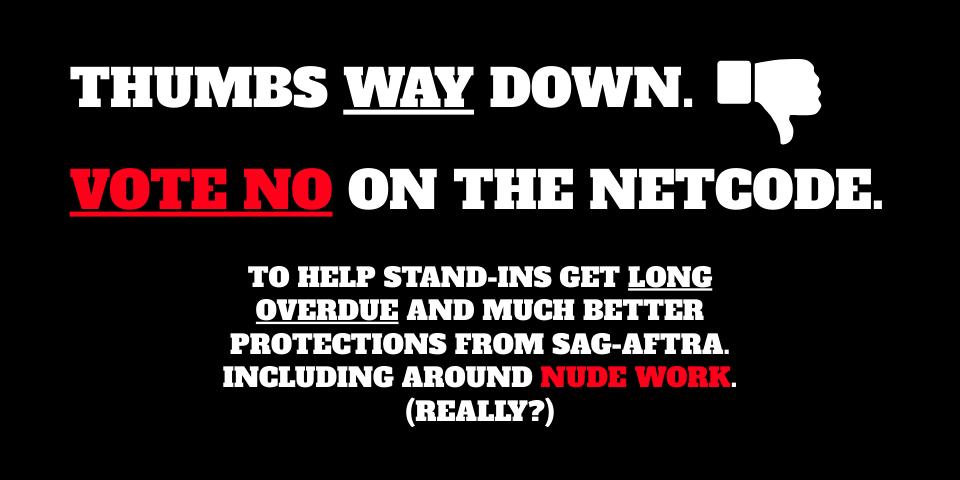In film and television, the term “stand-in” has a pretty defined meaning. It refers to a person who replaces an actor during the camera setup, lighting, and rehearsal of a shot, who then leaves set when the actor arrives to shoot. Of note, a stand-in does not appear on camera, but instead is “behind the scenes.”
But in general parlance, the term “stand-in” has a more general meaning. It refers to any person who substitutes for another person.
Professional & Unprofessional Uses of the Term “Stand-In”
Professionally, a stand-in is a professional who takes the place of another professional. In sports, stand-in coaches are common, or a stand-in goalie in soccer might be a substitute for the regular goalie. Usually the implication is that the stand-in is an equal or near-equal.
The term “stand-in” may also imply something unprofessional. Take the story of a Rhode Island city that dressed a man up as an elderly woman for a photo opportunity, rather than use an actual elderly woman from the community. In this case, the stand-in was a poor substitute for the real deal, rather than a professional equal or near-equal.
Entertainment Reporting’s Use of the Term “Stand-In”
In entertainment reporting, sometimes the use of the term “stand-in” is misleading. Since film and television fall into the entertainment industry, a more technical use of the term would be appropriate.
However, perhaps because entertainment reporting is aimed at a more popular audience than a technical, sometimes the term “stand-in” is applied to people who actually appear on camera.
For example, sometimes body doubles, photo doubles, and stunt doubles — all of whom appear on camera in place of an actor — are incorrectly referred to as stand-ins in entertainment reporting, when they are distinctly different from stand-ins in this context because stand-ins technically do not appear on camera. Vice versa also occurs.
There are problematic implications of confusing stand-ins and doubles in entertainment reporting. For example, if a stand-in is referred to as a double, photo double, or stunt double in entertainment reporting, and if there is a distinct difference in appearance between the stand-in and the principal actor, readers and viewers of the reporting may make negative comments about the actor given any physical differences.
Negative comments online may cynically suggest the actor is trying to look different in light of the stand-in’s appearance, while the stand-in is used only for lighting and setting up the shot, and not used as an on-camera substitute. The negative comments engendered by the inaccurate reporting on the stand-in may harm the actor’s reputation.
More on the use of the term “stand-in” in the media can be found in this post from Stand-In Central.
Understudies & Stand-Ins
In theater, understudies rehearse the roles of another actor in a production, and should that actor not be able to perform, the understudy steps up in place of the actor to perform the show.
In film and television, stand-ins are not in that position. While stand-ins may rehearse the roles of another actor in a production, should that actor be unable to perform, production does not turn to the stand-in to perform the role. Instead, production schedules are changed or roles are cast by different actors.
While it is plausible a stand-in could get a role in the absence of a principal actor, this would be an outstanding achievement! On the whole, it does not happen. For this reason, a stand-in should not be confused for an understudy. And because understudies are in the entertainment industry, it is advisable to stay away from referring to them as “stand-ins.”
Less Rigid Uses of the Term “Stand-In”
In speech outside the context of the entertainment industry, any kind of substitute person for another person may be referred to as a “stand-in.”
All in all, be careful when using the term “stand-in” when talking about people in the entertainment industry because it has a more rigid meaning in that context.
How do you use the term “stand-in” in your regular life? Where else does it pop up for you? Share your uses below!






Leave A Comment